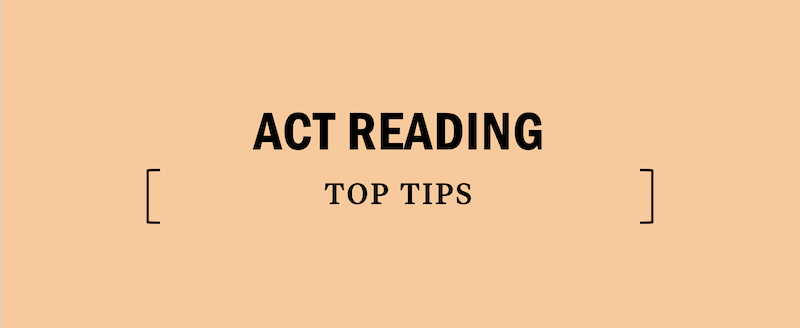ACT Reading Comprehension: Purpose Questions
Understanding a reading passage’s purpose, or main idea, means you must understand the overarching topic a reading passage is trying to convey. Not all purpose questions on the ACT will simply ask, “What’s the purpose of this passage?” Still, the following tips and strategies will work will all ACT reading comprehension questions. There you can take diagnostic tests, play interactive games, get advice from trained instructors, and chat with other high schoolers preparing for the ACT. It’s much better than studying alone!
1) Read the entire passage before trying to answer any question on any passage. By looking at the questions beforehand, you may not understand the overarching ideas in a passage.
2) Take notes in your test booklet. When you’re taking notes, whether it’s underlining or annotating, you’re being an active reader. Make sure you mark off sections of the text that discuss the purpose.
3) Remember to note if the author brings up items that contradict the passage’s original assertions. Does the author do this to make the argument more complicated? Or does the author do this to refute an opposing viewpoint?
4) Read each and every answer choice before selecting your final answer. Sometimes these questions can be complicated and A, no matter how great it may sound, might not be as good of a choice as D.
If you use these tips when you practice and on test day, you’re score will be excellent. Now, let’s check out how to use these tips on a sample ACT question:
Tips and Strategies for Purpose Questions
1) Read the entire passage before trying to answer any question on any passage. By looking at the questions beforehand, you may not understand the overarching ideas in a passage.
2) Take notes in your test booklet. When you’re taking notes, whether it’s underlining or annotating, you’re being an active reader. Make sure you mark off sections of the text that discuss the purpose.
3) Remember to note if the author brings up items that contradict the passage’s original assertions. Does the author do this to make the argument more complicated? Or does the author do this to refute an opposing viewpoint?
4) Read each and every answer choice before selecting your final answer. Sometimes these questions can be complicated and A, no matter how great it may sound, might not be as good of a choice as D.
Purpose Practice Question
If you use these tips when you practice and on test day, you’re score will be excellent. Now, let’s check out how to use these tips on a sample ACT question:
What was the purpose of the passage? It’s important to look at the different events discussed in it. Does it cover an entire history of building the transcontinental railroad? Actually, the passage covers the ceremony commemorating the completion of the railroad. So, A and B aren’t correct because there are not many details or careful descriptions about the building process. C looks right, since the focus, as we decided above, was on one event. Still, we have to make sure D isn’t a better answer. But, since the passage doesn’t touch upon any difficulties at the project’s inception, we now know the answer’s C.
Remember the tips and strategies to ensure you understand every passage’s purpose.

